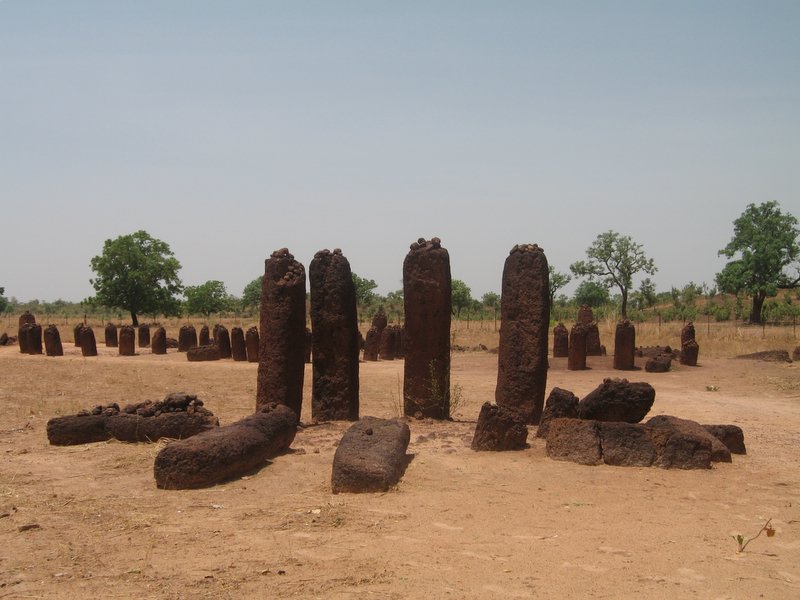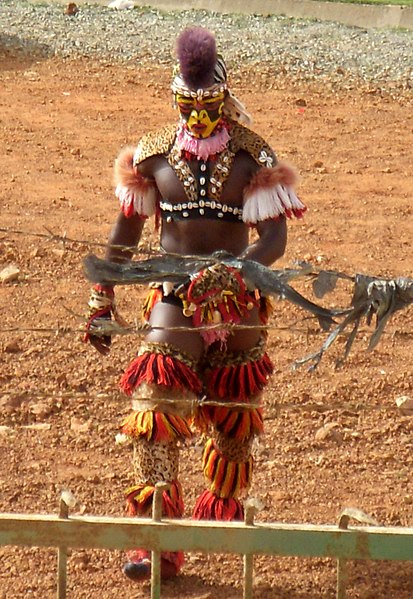According to Kola Abimbola, the Yorùbá have evolved a robust philosophy.[1] In brief, it holds that all human beings possess what is known as "Àyànmô"[4] (destiny, fate) and are expected to eventually become one in spirit with Olódùmarè (Olòrún, the divine creator and source of all energy). Furthermore, the thoughts and actions of each person in Ayé (the physical realm) interact with all other living things, including the Earth itself.[2]Each person attempts to achieve transcendence and find their destiny in Òrún-Réré (the spiritual realm of those who do good and beneficial things). One's Orí-Inu (spiritual consciousness in the physical realm) must grow in order to consummate union with one's "Ipônri" (Orí Òrún, spiritual self).[4]Those who stop growing spiritually, in any of their given lives, are destined for "Òrún-Apadi" (Lit. the invisible realm of potsherds). Life and death are said to be cycles of existence in a series of physical bodies while one's spirit evolves toward transcendence. This evolution is said to be most evident amongst the Orishas, the divine viziers of the Almighty God.
Iwapẹlẹ (or well-balanced) meditation and sincere veneration is sufficient to strengthen the Orí-Inu of most people.[2][4] Well-balanced people, it is believed, are able to make positive use of the simplest form of connection between theirOris and the omnipotent Olu-Òrún: an adúra (petition or prayer) for divine support.
Prayer to one's Orí Òrún has been known to produce an immediate sensation of joy. Ẹlégbara (Eṣu, the divine messenger) initiates contact with Òrún on behalf of the petitioner, and transmits the prayer to Ayé; the deliverer of àṣẹ or the spark of life. He transmits this prayer without distorting it in any way. Thereafter, the petitioner may be satisfied with a personal answer. In the event that he or she is not, the Ifa oracle of the Orisha Orunmila may also be consulted. All communication with Òrún, whether simplistic in the form of a personal prayer or complicated in the form of that done by an initiated priest of divination, however, is energized by invoking àṣẹ.
In the Yorùbá belief system, Olódùmarè has àṣẹ over all that is. It is for this reason that He is considered supreme.[2]According to one of the Yorùbá accounts of creation, during a certain stage in this process, the "truth" was sent to confirm the habitability of the newly formed planets. The earth being one of these was visited but deemed too wet for conventional life.
After a successful period of time, a number of divinities were commanded to accomplish the task of helping earth develop its crust. On one of their visits to the realm, the arch-divinity Obatala took to the stage equipped with a molluskthat held in its shell some form of soil; two winged beasts and some cloth like material. He emptied the soil onto what soon became a large mound on the surface of the water and soon after, the winged-beasts began to scatter this around until the point where it gradually made into a large patch of dry land; the various indentations they created eventually becoming hills and valleys.[5]Obatala leaped on to a high-ground and named the place Ife. The land became fertile and plant life began to flourish. From handfuls of earth he began to mould figurines. Meanwhile, as this was happening on earth, Olódùmarè gathered the gasses from the far reaches of space and sparked an explosion that shaped into a fireball. He subsequently sent it to Ife, where it dried much of the land and simultaneously began to bake the motionless figurines. It was at this point that Olódùmarè released the "breath of life" to blow across the land, and the figurines slowly came into "being" as the first people of Ife.[5]For this reason, Ile-Ife is locally referred to as the "cradle of existence".[5]
An Alternative Version Of The Creation
The Yorùbá regard Olódùmarè as the principal agent of creation.
In another telling of the creation myth, Olódùmarè (also called Olorun) is the creator. In the beginning there is only water. Olódùmarè sends Obatala to bring forth land. Obatala descended from above on a long chain, bringing with him a rooster, some earth, and some iron. He stacked the iron in the water, the earth on the iron, and the chicken atop the earth. The chicken kicked and scattered the earth, creating land. Some of the other divinities descended upon it to live with Obatala. One of them, Chameleon, came first to judge if the earth was dry. When he said that it was, Olódùmarè called the land Ife for "wide". Obatala then created humans out of earth and called Olódùmarè to blow life into them. Some say Obatala was jealous and wished to be the only giver of life, but Olódùmarè put him to sleep as he worked. Conversely, it is also said by others that it is Obatala who shapes life while it is still in the womb.[7]










